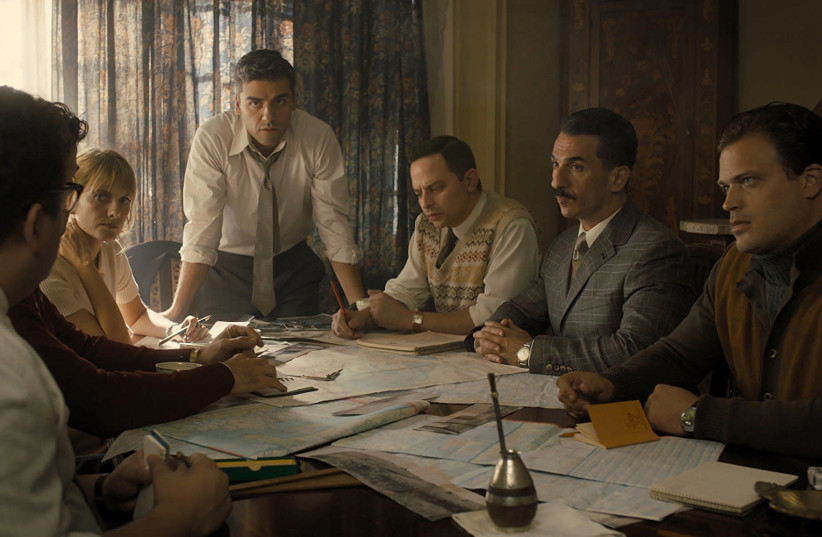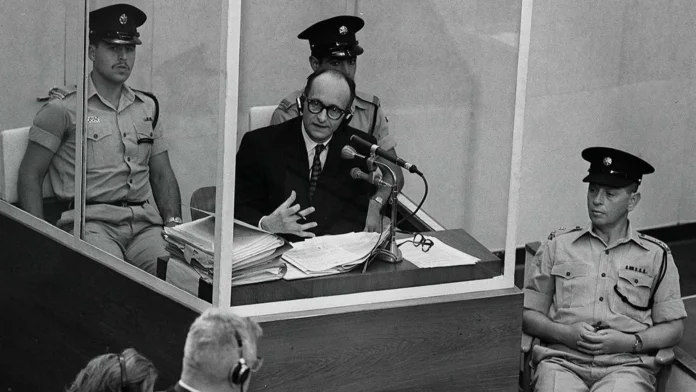Picture this: a quiet street in Buenos Aires, Argentina, May 1960. A man named “Ricardo Klement” steps off a bus, unaware that Israeli Mossad agents are watching his every move. This unassuming figure, living under a false identity, is Adolf Eichmann—the Nazi officer who orchestrated the mass deportation of millions of Jews to concentration camps during the Holocaust. His capture, trial, and execution would become one of the most gripping chapters in post-WWII history, exposing the chilling machinery of Nazi war crimes to the world. How did one man evade justice for 15 years, only to be brought down by a covert operation that still captivates us today?
The Man Behind the Horror
Adolf Eichmann was born in 1906 in Solingen, Germany, and joined the Nazi Party in 1932. Rising through the ranks, he became a lieutenant colonel in the SS and a key figure in the “Final Solution”—the Nazi plan to exterminate Europe’s Jews. As head of the Gestapo’s Department IV B4 (Jewish Affairs), Eichmann meticulously organized the identification, assembly, and deportation of Jews to death camps like Auschwitz and Treblinka. Historical records, including those from the Nuremberg Trials, estimate he was responsible for the deportation of over 1.5 million Jews between 1942 and 1945. Cold, efficient, and unrepentant, Eichmann once chillingly remarked,
I will leap into my grave laughing,” proud of his role, according to Eichmann in Jerusalem by Hannah Arendt (1963).
Escape to Argentina
When WWII ended in 1945, Eichmann went underground. Using a network of Nazi sympathizers known as the “ratlines,” he fled to Austria, then Italy, securing a fake passport under the name Ricardo Klement. By 1950, he had settled in Argentina—a haven for Nazi fugitives due to its lax immigration policies under President Juan Perón. Eichmann lived quietly in Buenos Aires, working at a Mercedes-Benz factory, his past buried beneath a new identity. For 15 years, he evaded justice, blending into the suburbs with his wife and children.
The Mossad Hunt

The Israeli intelligence agency, Mossad, had been hunting Nazi war criminals since Israel’s founding in 1948. In 1957, a tip from a German prosecutor, Fritz Bauer, reached Israeli authorities: Eichmann was alive in Argentina. Bauer, a Jewish Holocaust survivor, had received information from a German-Jewish émigré whose daughter had dated one of Eichmann’s sons, unknowingly revealing his father’s true identity. Mossad director Isser Harel launched Operation Finale, assembling a team of elite agents, including Peter Malkin and Rafi Eitan, to track him down.
After years of surveillance, the team confirmed Eichmann’s identity in 1960. On May 11, as he stepped off a bus in the San Fernando neighborhood, Mossad agents pounced. In a swift operation, they grabbed him, bundled him into a car, and hid him in a safe house. Nine days later, Eichmann was smuggled out of Argentina on an El Al plane, disguised as a flight crew member, landing in Israel on May 22, 1960.
The Trial That Shocked the World
Eichmann’s trial began on April 11, 1961, in Jerusalem, the first Nazi war crimes trial held in Israel. Broadcast globally, it was a landmark event, giving survivors a platform to share their horrors. Over 100 witnesses testified, detailing the genocide Eichmann had orchestrated. Eichmann, sitting in a bulletproof glass booth, claimed he was “just following orders,” a defense that became infamous as the “banality of evil,” a phrase coined by Hannah Arendt in her coverage for The New Yorker. On December 15, 1961, he was convicted on 15 counts, including crimes against humanity, and sentenced to death. On May 31, 1962, Eichmann was hanged at Ramla prison—the only execution ever carried out by Israel. His ashes were scattered in the Mediterranean to prevent any shrine for Nazi sympathizers.
Impact and Legacy
The Eichmann trial was a watershed moment. It brought the Holocaust’s atrocities into global consciousness, educating a generation about the scale of Nazi genocide. The testimonies, preserved in archives like Yad Vashem, remain a vital historical record. The trial also set a precedent for international justice, influencing future tribunals for war crimes in places like Rwanda and Yugoslavia. Eichmann’s capture showed that justice could reach even those who hid for decades, a testament to the resolve of Holocaust survivors and Israeli determination.
Here are some books like Eichmann in Jerusalem: A Report on the Banality of Evil and movies like Operation Finale on the above topics.
Books
- Eichmann in Jerusalem: A Report on the Banality of Evil
- The House on Garibaldi Street
- Eichmann in My Hands
- Hunting Eichmann
- Becoming Eichmann
Movies
- Operation Finale
- Eichmann
- The Man in the Glass Booth
- The Trial of Adolf Eichmann
